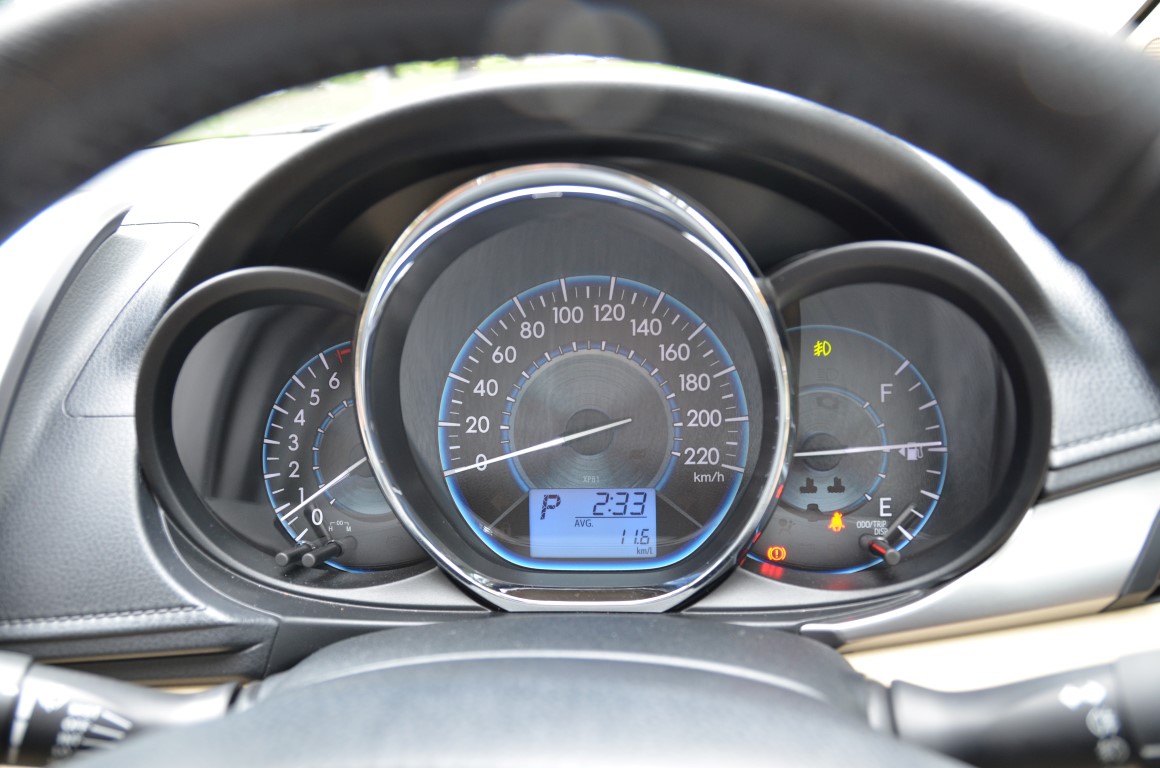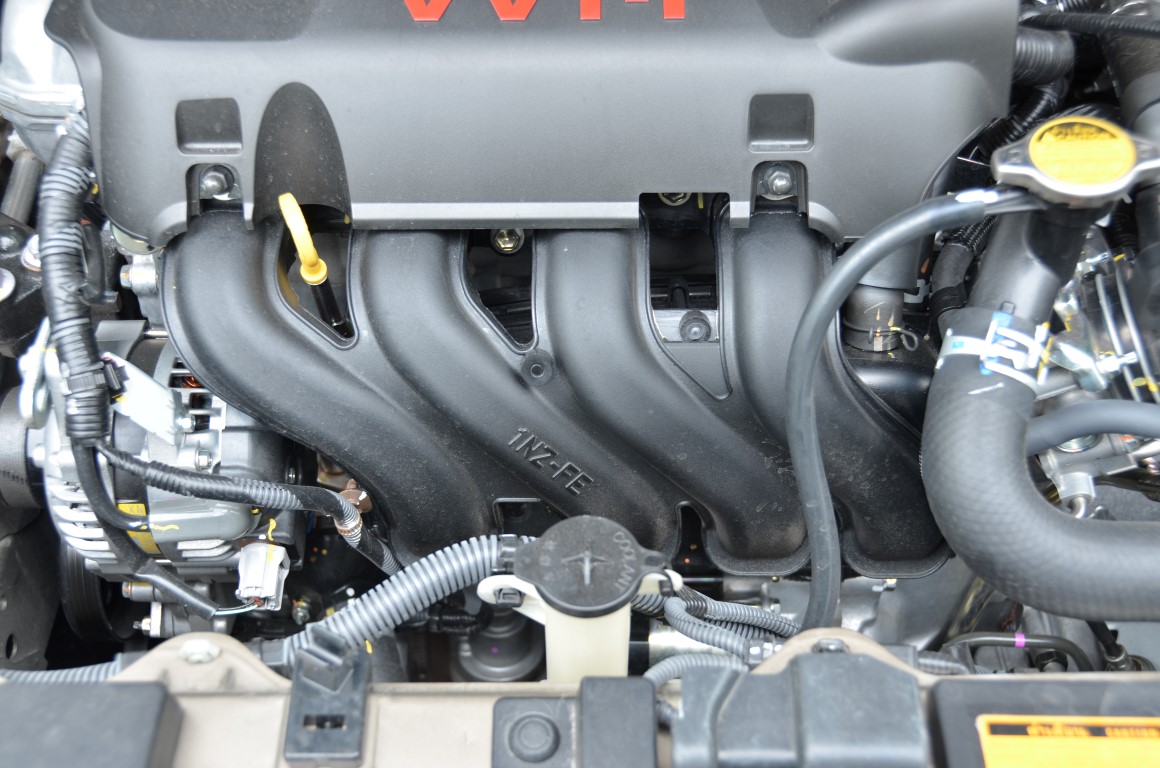A Longer Test Drive with the New Toyota Vios
We carried a short article earlier on the new Toyota Vios, based on a short drive organized by UMW Toyota for the media. Last weekend, they gave me one, the ‘G’ variant for three days, and I got up closer and more personal with it, making some more interesting discoveries that I had missed out.
The ‘G’ variant is priced at RM88,500, and is one grade below the top-of-the-range TRD Sportivo, which is priced at RM93,200. The G comes with a 4-speed automatic transmission, standard in all variants except for the entry level J manual variant. My following report is based on the G variant.
Getting into the car now is much easier – you just need to have the key on you, and all you have to do is to press a little black button on the driver’s door handle for all the doors to unlock. It does not work on the passenger door, though, as there is no such little black button on that door or on any other door other than the driver’s door. Once inside, you again do not need to use the key, as there is a push-button start. Technically, all you need to do is to keep the Vios key in your pocket, and you have access to the car. The only time you need to take out the key again is to use it to lock the car when you get out, which is good in that it serves as a reminder to you as to where your key is.
Inside, there are no surprises, with a beige and black two-tone interior, nothing very loud or glaring, just as you would expect from a mainstream car. The only thing outstanding about the interior would be what looks like leather stitching on the dashboard and the door trims – upon taking a closer look, you will note that the ‘stitching’ is not stitching at all, and what looks like leather is actually plastic. It looks fine, though, and should be a good conversation piece for some time to come. The meter cluster is back where it should have been, right in front of the driver instead of in the centre of the dashboard, with a tachometer on the left, and speedometer in the centre, and a rather large fuel gauge on the right, the size of which must be to match the tachometer on the left. Below the speedometer is an onboard display which can be toggled to give various driving information such as average and instantaneous fuel consumption, average speed, and vehicle range.
The gear lever remains as a ‘gated’ shift, which is of no consequence compared to a conventional straight-line shifter, other than making it ‘sporty’. There is a 7-inch touch screen for navigation, audio and reverse camera. Whilst it is great during the day, I do wish that all these screen makers would make some sort of dimmer for the screen at night so that they are not so glaring to the eyes.
The front seats are mechanically adjustable, with the driver’s seat having a limited amount of height adjustability. The rear seats are fixed, but can be split-folded 60:40 for carrying long objects. Rear legroom is good, with a good five inches of clearance between my knees and the back of the front seat. The Vios is mooted as a five seater, but if you really want to be comfortable, four would be the maximum.
I took a scenic drive on a back road that begins at Semenyih, and emerges at Mantin – the route from Petaling Jaya to Semenyih passed through a couple of good highway road, while the back road stretch meandered over many twisty sections, plus uphill and downhill stretches. All in all I think I covered most of the territory that any typical owner would cover in the Vios.
The Vios takes off smoothly, and gear changes are smooth – as long as you do not floor the throttle, the interior is quiet, and the Vios builds up speed easily and smoothly. However, if you are in a hurry, its character changes with the engine roaring with added urgency – this happens whenever I am in an overtaking situation at slow to medium speeds between 60 to 80 kph – the transmission kicks down to second form toodling in fourth, which then has the engine roaring earnestly at a higher revolution and trying to go even higher. Whilst most cars would sound loud due to acceleration, the engine roar from a 4-speeder would be relatively higher. I look forward to the day when Toyota finally decides that a 4-speeder is not really what its customers want.
Still, other than the fact that it roars under acceleration, the Vios is actually quite nice to drive at ‘normal’ speeds of between 80 to 120 km/h. At these speeds, if you drive in a relaxed manner, the interior is relatively quiet, and the transmission yields around 40 km/h per 100 rpm. Thus, if you are travelling at 100 km/h, your engine is sweetly ticking over at 2,000 rpm.
The Macpherson strut suspension at the front, supported by a torsion beam suspension at the back carries the Vios peacefully over the roads, providing a firm but comfortable ride. cornering ability is good, and even at higher speeds through the twisty road sections, the Vios did give a good account of itself; it is a good balance between comfort and handling.
The small 42 litre fuel tank gives the Vios a range of around 450 kilometres before the refuel light comes on. The on-board display for average fuel consumption gives the fuel consumption in kilometres per litre. When the car was handed to me, the reading on the display showed 9.7 kilometres per litre – obviously someone before me had driven the car quite hard. Anyway I did a reset, and over the next two hundred kilometres, over my test route and a mixture of relaxed and hard driving, I achieved 11.6 kilometres per litre, which works out to be a decent 8.62 litres per 100 kilometres. If you are a sedate driver with a cost-conscious right foot, you are likely to be able to get more.
My overall verdict is that the Vios is a pleasant car for someone, probably a mainstream type of person who is looking for a reliable vehicle (for which Toyota is already renowned) with reasonable performance, good fuel economy, and value for money.




























